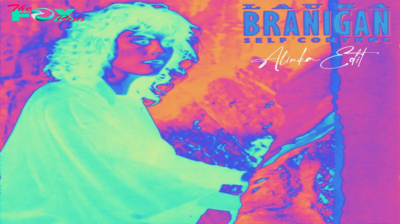Entertainment
Paganini and Falstaff encourage Malofeev and Petrenko to a live performance of the best order – Seen and Heard Worldwide
 United Kingdom Rachmaninoff, Elgar: Alexander Malofeev (piano), Royal Philharmonic Orchestra / Vasily Petrenko (conductor). Royal Pageant Corridor, London, 9.6.2024. (MBr)
United Kingdom Rachmaninoff, Elgar: Alexander Malofeev (piano), Royal Philharmonic Orchestra / Vasily Petrenko (conductor). Royal Pageant Corridor, London, 9.6.2024. (MBr)
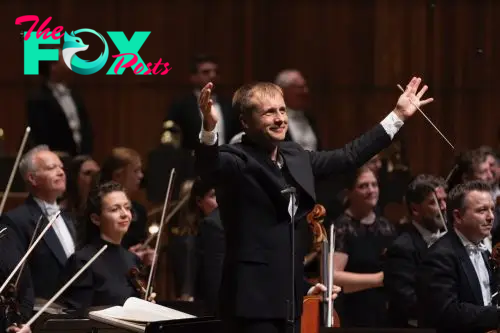
Rachmaninoff – Rhapsody on a Theme of Paganini
Elgar – Falstaff
One factor I’ve seen about some orchestral live performance applications in the US within the final couple of years is their relative shortness; concert events across the hour mark will not be unusual. Even by these requirements, nonetheless, this Royal Philharmonic Orchestra one was a short affair with simply over 50-minutes of programmed music. Much less can all the time be dangerous, however that was not the case right here: the selection of pianist, Alexander Malofeev, was impressed, the work he performed Rachmaninoff’s Rhapsody on a Theme of Paganini a big-draw piece. Elgar’s Falstaff is a rarer work within the live performance corridor lately – however it performed to the strengths of each this orchestra and its conductor, Vasily Petrenko. Brief maybe, however the high quality was of the best order.
Earlier this 12 months I reviewed Alexander Malofeev in a unprecedented Barbican Corridor efficiency of Prokofiev’s Third Piano Concerto (evaluation right here). There was nothing much less sensible, or much less fascinating, about this one of many Rachmaninoff piece. The 2 works couldn’t be extra totally different – though, at a stretch, the Prokofiev concerto does use a variation format in one among its actions (the second). What had been so attention-grabbing about Malofeev’s Prokofiev – the delicacy, the golden tone, the soft-edge, the steadiness and the magnificence – turned instantly obvious when one heard this Rachmaninoff; had one heard it the opposite method around the dazzling brilliance of his Prokofiev wouldn’t have been fairly so stunning.
The Paganini caprices are hardly authentic inspirations for different composers – Liszt and Brahms used them, amongst others. However I’ve typically discovered their use elsewhere much less of a chore to take heed to than with Paganini himself though, after all, composers will not be merely instrumentalising every of them. Rachmaninoff (as did Liszt) used the Caprice 24, Op.1, though repetitions of it are few – quite we get double variations of it. What’s, I believe, true of the Rachmaninoff is that you’re by no means fairly removed from escaping the shadow of the good violinist himself – and it’s this which permits the pianist such discretion in efficiency.
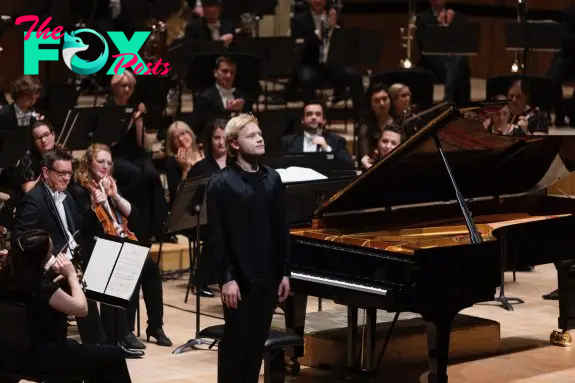
Clearly a virtuoso work, it’s a revelation when it’s performed as a poetic one. Malofeev’s willingness to emphasize concord, lightness of contact (his palms would generally float above the keyboard as if defying gravity), and devotion to enjoying the composer’s rating markings (comparable to within the meno mosso, a tempo moderato of Variation 7) was typically a shock. It arrange a superb distinction to that acquainted Rachmaninoff theme – the Dies Irae – the place Malofeev’s energy was typically accompanied with octaves that rang out like tolling bells (Variation 9). What was uncommon concerning the triplet of Variations (11 to 13) was how Malofeev took a progressive view of them quite than a extra frequent one among enjoying them as heavy on the primary, too understated on the minuet and overly dramatic on the octaves and chords on the final of them. This was about steadiness, about construction and it made the dramatic scale of the next two Variations extra scintillating.
Variation 17 had a crestfallen high quality to it – and probably the most gloriously shaded bronzed tone – earlier than that the majority well-known of the Variations, No.18. Maybe this does look backwards to Rachmaninoff’s Second Concerto, however by way of interpretation and a pianist’s willingness to make use of rubato I’m extra inclined to view it as nearer to the primary meno mosso within the final motion of the Third Concerto. The climax is, after all, within the orchestra – it’s the artwork and sensation of magnificence that’s within the piano, and that’s captured instantly within the opening bars. I may need wished just a bit extra distinction within the weight of the fingers on the keyboard, just a bit extra breadth between the notes (comparable to with Kyohei Sorita) – however this was nonetheless properly past what one often hears within the live performance corridor.
The remaining Variations are virtually like a form of coda to the work – an thrilling finale of virtuosic enjoying (and again to the Dies Irae), with pianism that nearly seems like it’s being performed on the hoof. Variation 19 had a tumultuous jig to it, Malofeev’s inexorable keyboard management a form of dazzling ivory violin neck. Cyclones of notes have been performed with speedy accuracy by means of the cadenza – though as sonorous and stentorian as Malofeev made them they by no means sounded hazy, despite the fact that Paganini’s theme has itself been misplaced within the mist beneath them. The ultimate flourish down the keyboard had dramatic brilliance – just for Malofeev so as to add that closing contact with the flash of a finger and a blink of an eye fixed.
Like Malofeev’s Prokofiev earlier this 12 months, this had been dazzling stuff. Maybe the much less apparent method he shows his virtuosity labored extra in favour of the music right here as a result of Rachmaninoff makes this much less of a showpiece, though it’s stunning what number of pianists suppose fairly the other. There was a substantial quantity of darkness in Malofeev’s interpretation, maybe helped by Vasily Petrenko and the RPO including to this in an orchestral accompaniment that was choreographed to play to the darker facet of Rachmaninoff’s rating. The Dies Irae sections actually had fairly sinister overtones and if the ghost of Paganini was not all the time within the pianist he generally appeared in Petrenko.
Being a brief program there was no interval however rearranging the seating gave Vasily Petrenko a while to elucidate to the viewers slightly about Elgar’s Falstaff. It has been argued – actually by Donald Tovey, and likewise, I believe, by Norman del Mar – that there’s some benefit to giving us an concept of what scores about historic figures are literally about. One can, after all, take heed to a chunk of music realizing nothing about it in anyway – so how far is it vital to know what the literary inspiration is for Falstaff and the way Elgar converts these into musical concepts for what’s a half-hour symphonic work? Petrenko’s narration of the story was slightly convoluted – and slightly disjointed – and should you had the £4 booklet you may need had a greater likelihood of following Falstaff’s story. Having mentioned that, you’d utterly have missed within the notes – however not from Petrenko’s little discuss – gems that exist within the music itself comparable to Falstaff falling right into a deep sleep within the tavern and this being heard within the orchestra by means of the ‘loud night breathing’ on the timpani and tubas.
Falstaff was not well-received when it was first carried out; in the present day it’s extensively seen as Elgar’s most interesting orchestral work, bar his two full symphonies. I believe, usually, Petrenko took a quite fleet view of Falstaff – even when he typically had an excellent concept of what the character of Falstaff needs to be like. There was no query that the RPO’s enjoying had each the depth and richness of enjoying to counsel one thing of the corpulence and girth of the person himself. Prince Hal is partly seen by means of the underbelly of London’s tavern life, and it’s right here that the tempi are sometimes extra frenetic. I believe Petrenko was keen to take some dangers to get the image of the boisterous prince excellent with out taking the music to the cliff edge. There have been wild trills within the woodwind (particularly bassoons), some dazzling pizzicato within the strings, beautiful harps (all the time such an Elgarian deal with), and brass at fff that have been explosive. You couldn’t have requested for a extra thrilling tavern brawl – very sharp enjoying from the orchestra, riotous (but managed) tempos from Petrenko setting an image of mayhem and turmoil. How remarkably like Richard Strauss this work can sound is commonly revealed on the shut of the tavern scene – the ‘belching’ on the bass clarinet, and, sure, that splendidly atmospheric ‘loud night breathing’ on the timpani and tuba all so superbly carried out right here.
Falstaff’s ‘scarecrow Military’ is known as a caricature part and Petrenko delved deep right here into near-comic territory. A number of the enjoying was wittily dealt with (trumPets and horns, particularly) and his tempi have been fiery. It made the coronation scene (the place Prince Hal turns into Henry V) all of the extra exultant, the tempo statelier – certainly, among the enjoying was really monumental in scale (tambourines from the boisterous tavern scene are right here changed by resplendent cymbals resonating across the cathedral). The solo violin (Emily Davis) – once more so harking back to Strauss in his tone poems – was a stunning second of not simply serenity however poignancy; a clarinet solo (Katerine Lacy) hauntingly prefaced the dying of Falstaff, itself marked on the mournful side-drum.
An outstanding efficiency, of fairly some stature, which uncovered many particulars of this beautiful work.
Marc Bridle
-

 Entertainment4h ago
Entertainment4h agoOrange County Choppers Is Ready For Its Big Comeback
-
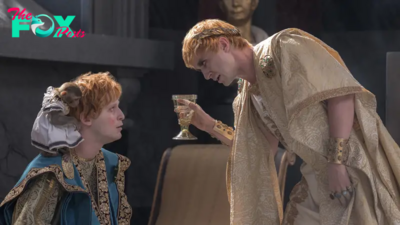
 Entertainment9h ago
Entertainment9h agoThe Real Story of Geta and Caracalla, the Roman Brother Emperors in Gladiator II
-

 Entertainment9h ago
Entertainment9h agoWhat Gladiator II Gets Right and Wrong About Real Fights in the Colosseum
-

 Entertainment10h ago
Entertainment10h agoSki Area Officially Opens the Ski Season For New York
-

 Entertainment14h ago
Entertainment14h agoGladiator II Belongs to Denzel
-
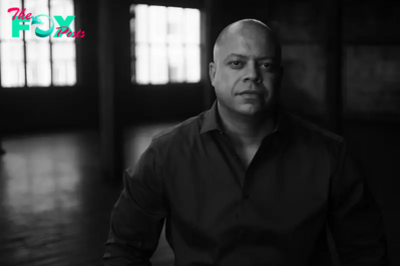
 Entertainment14h ago
Entertainment14h agoJJ Velazquez on Finding Freedom, From Sing Sing to Sing Sing
-
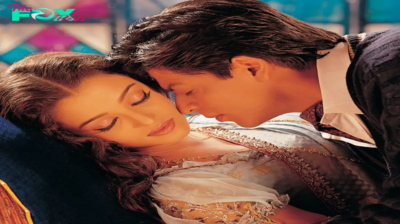
 Entertainment19h ago
Entertainment19h ago13 Most Romantic Movies Based on Novels
-

 Entertainment19h ago
Entertainment19h agoThe Monkey Is the Secret Hero of Gladiator II
